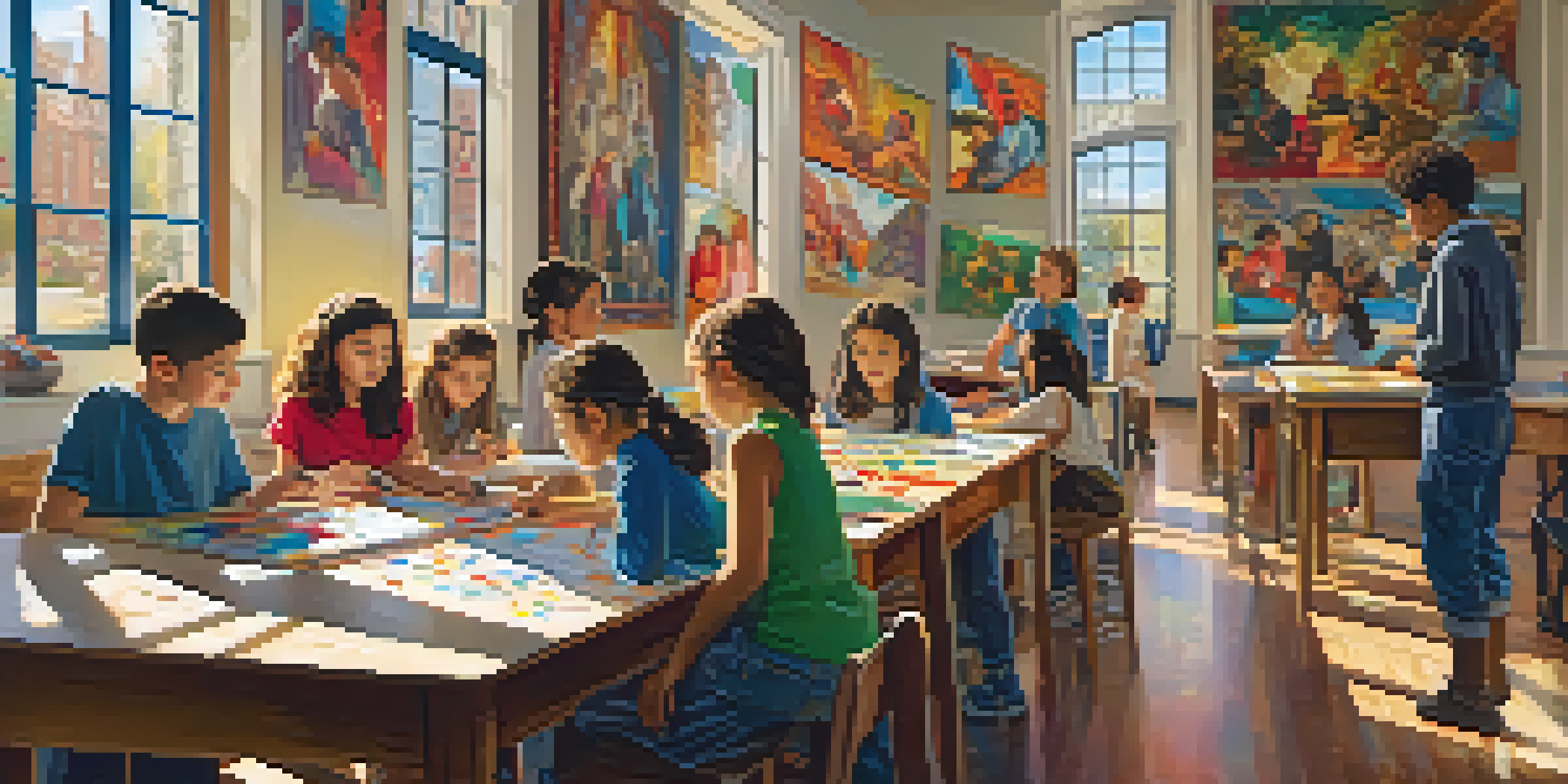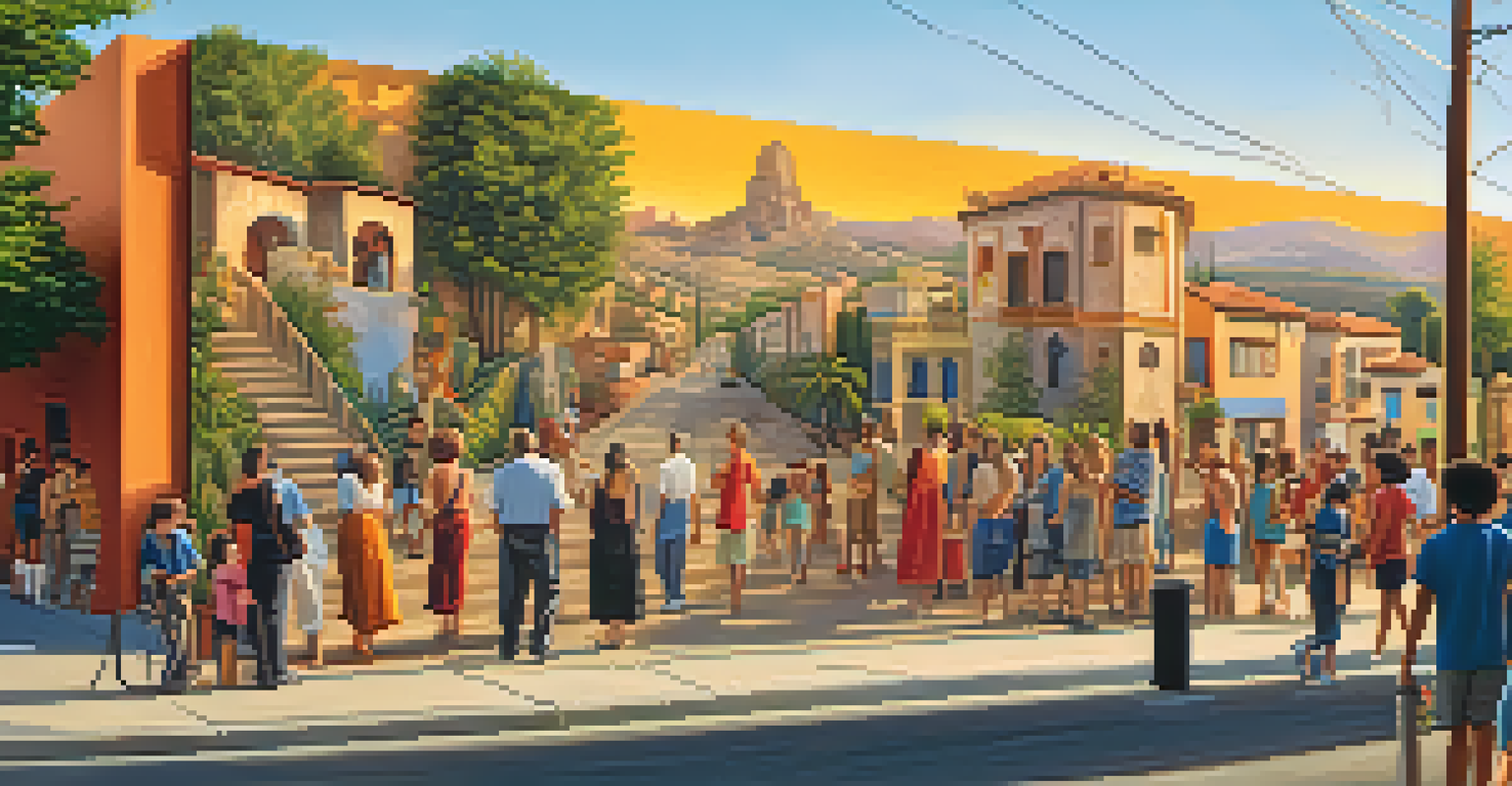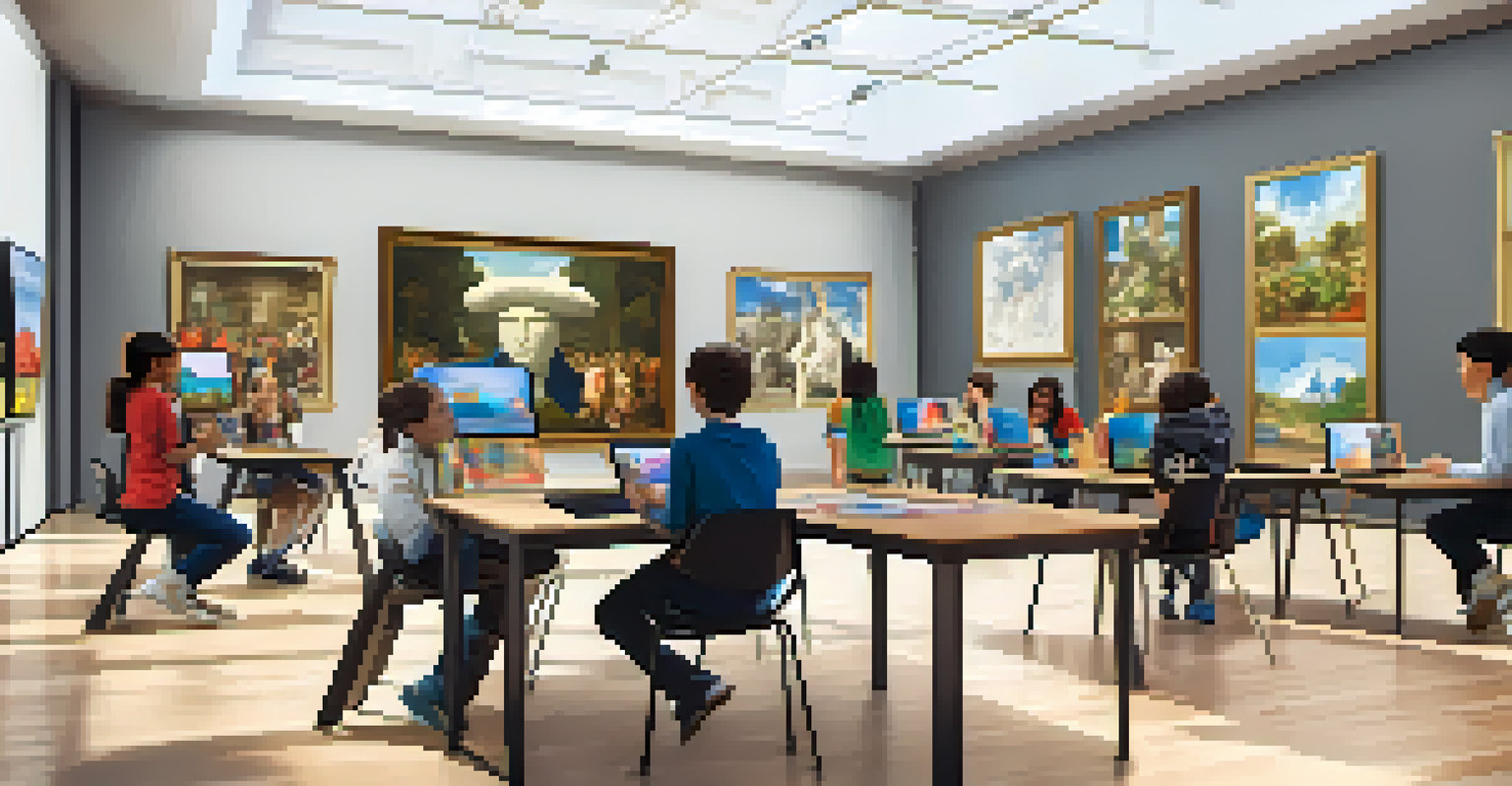Integrating Art and History in Spanish Cultural Education

The Importance of Art in Understanding History
Art serves as a visual representation of historical events, emotions, and cultural shifts. By analyzing paintings, sculptures, and other artistic expressions, students can gain insights into the societal context of different eras. For instance, the works of Spanish artists like Goya and Velázquez provide a window into the political and social climates of their times.
Every artist dips his brush in his own soul, and paints his own nature into his pictures.
Incorporating art into history lessons not only makes the subject more engaging but also fosters critical thinking. Students learn to interpret visual cues, understand symbolism, and explore various perspectives. This multi-faceted approach helps them grasp complex historical narratives in a more relatable way.
Moreover, art can evoke emotional responses, making historical events more memorable. When students connect with an artwork, they often feel a personal connection to the history it represents, enhancing their overall learning experience.
Exploring Spanish Culture Through Artistic Movements
Spanish cultural education can be significantly enriched by exploring the various artistic movements that have emerged throughout the nation's history. Each movement, from the Golden Age of painting to the modern avant-garde, reflects the socio-political climate of its time. Understanding these movements allows students to see how art and history are interconnected.

For example, the influence of the Spanish Civil War on the artwork of artists like Pablo Picasso reveals the deep ties between personal expression and national events. Lessons that incorporate discussions around such movements enable students to appreciate art not just as an aesthetic form but as a commentary on historical issues.
Art Enhances Historical Understanding
Analyzing art provides insights into the societal context and emotional resonance of historical events.
By examining these relationships, students can develop a nuanced understanding of cultural identity and heritage in Spain. This exploration fosters a deeper appreciation for the arts and encourages students to think critically about the past.
Utilizing Local Art as a Historical Resource
Local art can serve as a powerful tool for teaching history in Spanish cultural education. Exploring works created by local artists allows students to connect with their immediate cultural environment. This connection can spark discussions about how local history, traditions, and events have shaped artistic expression.
Art is not freedom from discipline, but disciplined freedom.
For instance, murals found in various Spanish cities often tell stories of community struggles, triumphs, and celebrations. By studying these pieces, students can learn about their own history through the lens of art, making lessons more personal and impactful.
Encouraging students to engage with local art can also inspire them to appreciate their cultural heritage and promote community pride. This approach fosters a sense of belonging and encourages students to explore their creative expressions.
Integrating Technology in Art and History Education
Technology offers exciting opportunities to enhance the integration of art and history in Spanish cultural education. Digital resources such as virtual museum tours and online galleries allow students to explore artworks from anywhere in the world. This accessibility broadens their understanding of global art movements and their historical contexts.
Additionally, technology can facilitate interactive learning experiences. For example, students can create multimedia projects that combine historical research with artistic elements, allowing them to express their interpretations creatively. Such projects not only deepen their understanding but also encourage collaboration and innovation.
Local Art Connects Students to Culture
Exploring local artistic expressions helps students relate personal and community history to broader cultural narratives.
Incorporating technology also prepares students for 21st-century skills by fostering digital literacy and creativity. As they navigate these tools, they learn to present their ideas effectively, a skill that is invaluable in today's job market.
Field Trips: Experiencing Art and History Firsthand
Field trips provide students with the invaluable experience of interacting with art and history in person. Visiting museums, galleries, and historical sites allows students to engage with the material they have studied in the classroom. This hands-on experience can spark a deeper interest in both art and history.
For example, a trip to the Museo del Prado in Madrid can bring to life the works of Spanish masters like El Greco and Goya. Students can analyze the paintings in their original context, enhancing their understanding of the historical significance behind each piece.
Moreover, field trips promote experiential learning, where students can reflect on their experiences and discuss their insights. This reflection process reinforces their learning and fosters a lifelong appreciation for art and history.
The Role of Community Engagement in Education
Engaging with the community can greatly enhance the integration of art and history in Spanish cultural education. Collaborating with local artists, historians, and cultural organizations can provide students with real-world perspectives on the subjects they study. These partnerships enrich the curriculum and foster a sense of community involvement.
For instance, inviting local artists to lead workshops or discussions can inspire students and provide them with unique insights into the artistic process. Such interactions can bridge the gap between theoretical knowledge and practical application, making learning more relevant and impactful.
Technology Enriches Art Education
Utilizing digital resources and interactive projects broadens students' understanding of art and history while fostering essential skills.
Additionally, community projects that focus on local history and art can encourage students to contribute to their cultural landscape. This involvement not only strengthens their understanding of their community's heritage but also instills a sense of responsibility toward preserving it.
Fostering Critical Thinking Through Art Analysis
Analyzing art can be a powerful way to foster critical thinking skills in students. When students examine artworks, they are encouraged to ask questions, interpret meanings, and draw connections to historical events. This analytical process helps them develop essential skills that are valuable in all areas of study.
For instance, discussing the symbolism in Salvador Dalí's surrealist paintings allows students to explore themes such as identity and reality. By engaging in conversations about the artist's intentions and the historical context, students learn to appreciate the depth of artistic expression.

This practice of critical analysis cultivates open-mindedness and encourages students to consider multiple viewpoints. As they learn to appreciate the complexities of art, they also become more adept at navigating the complexities of the world around them.